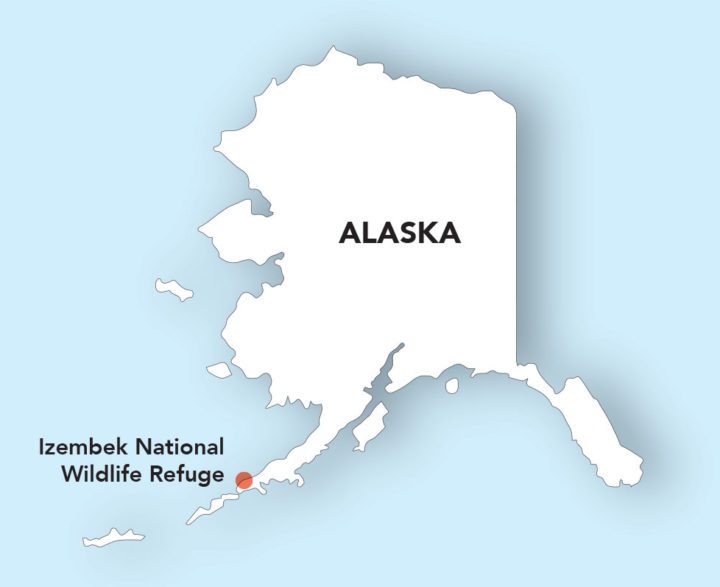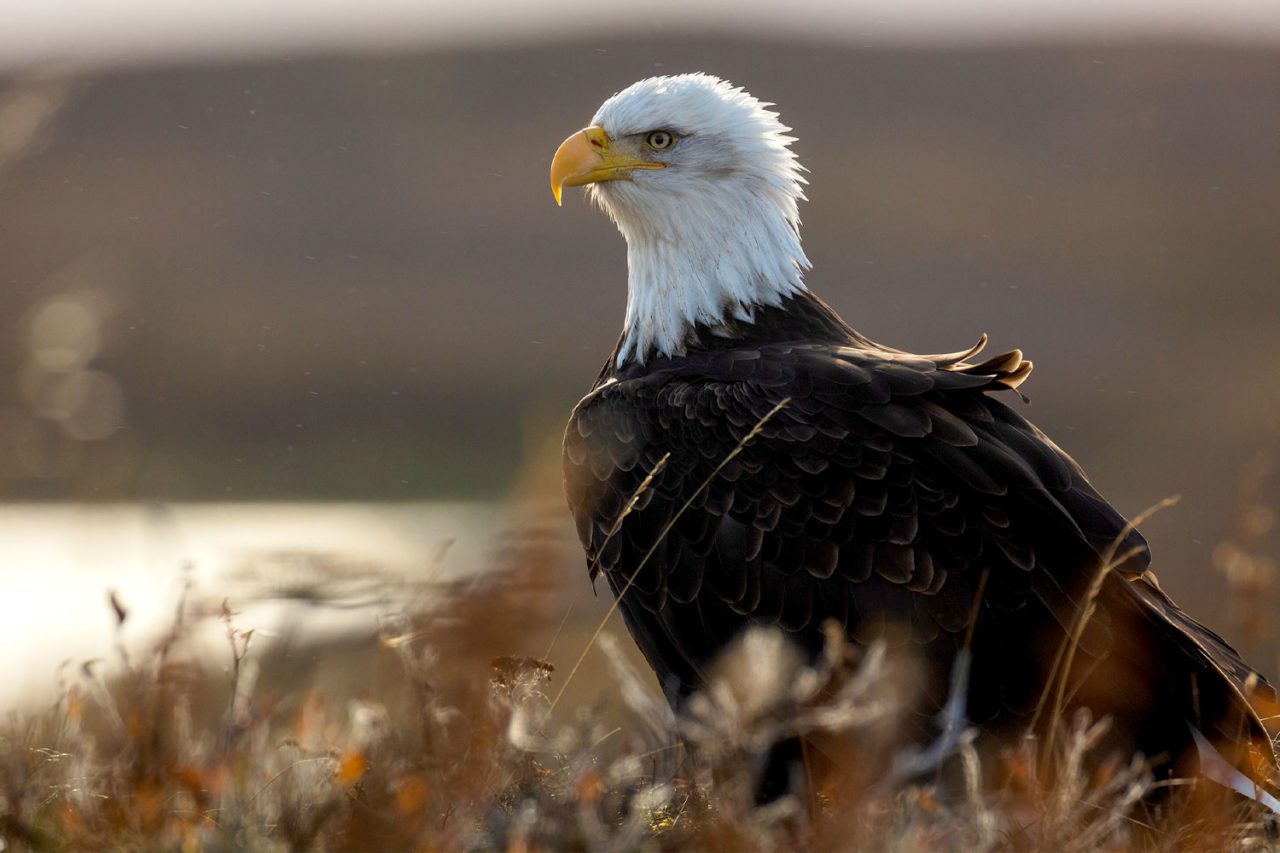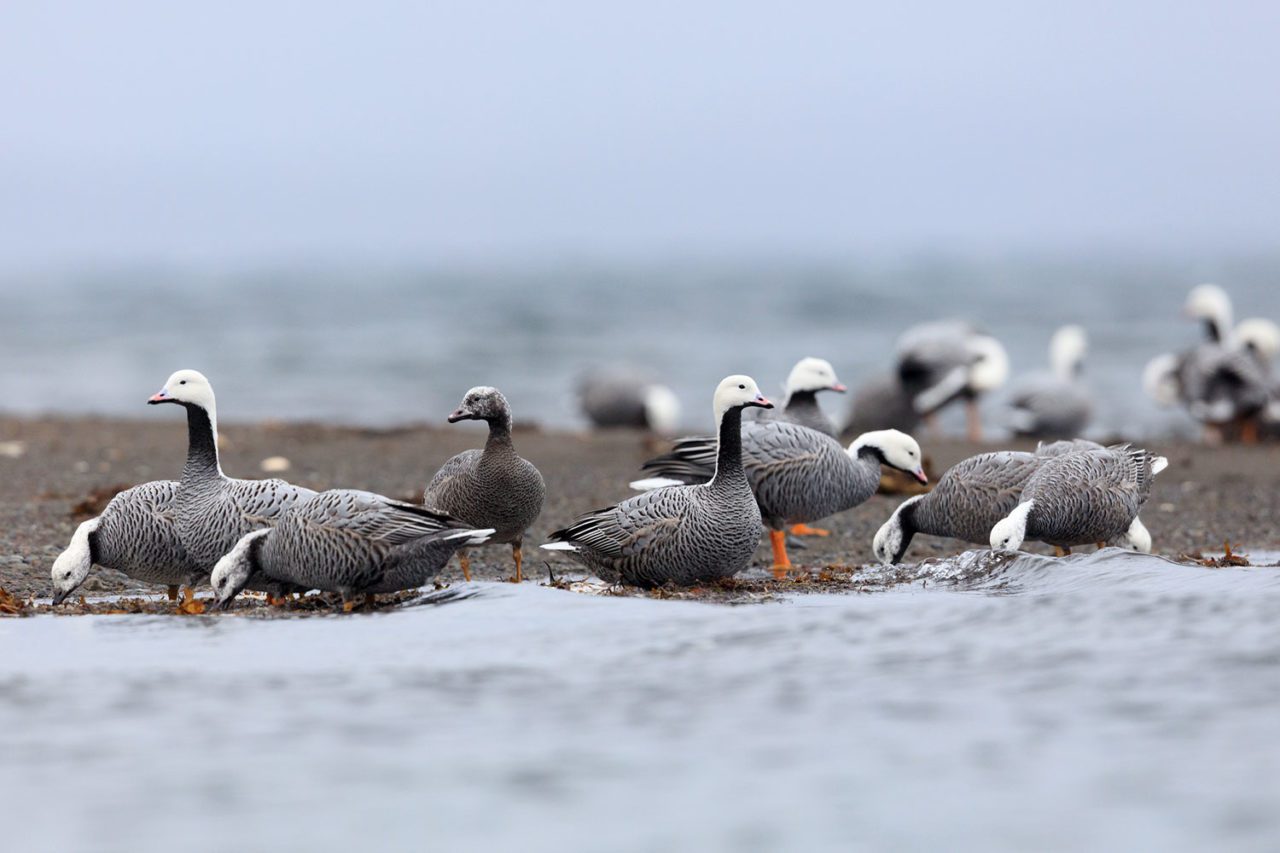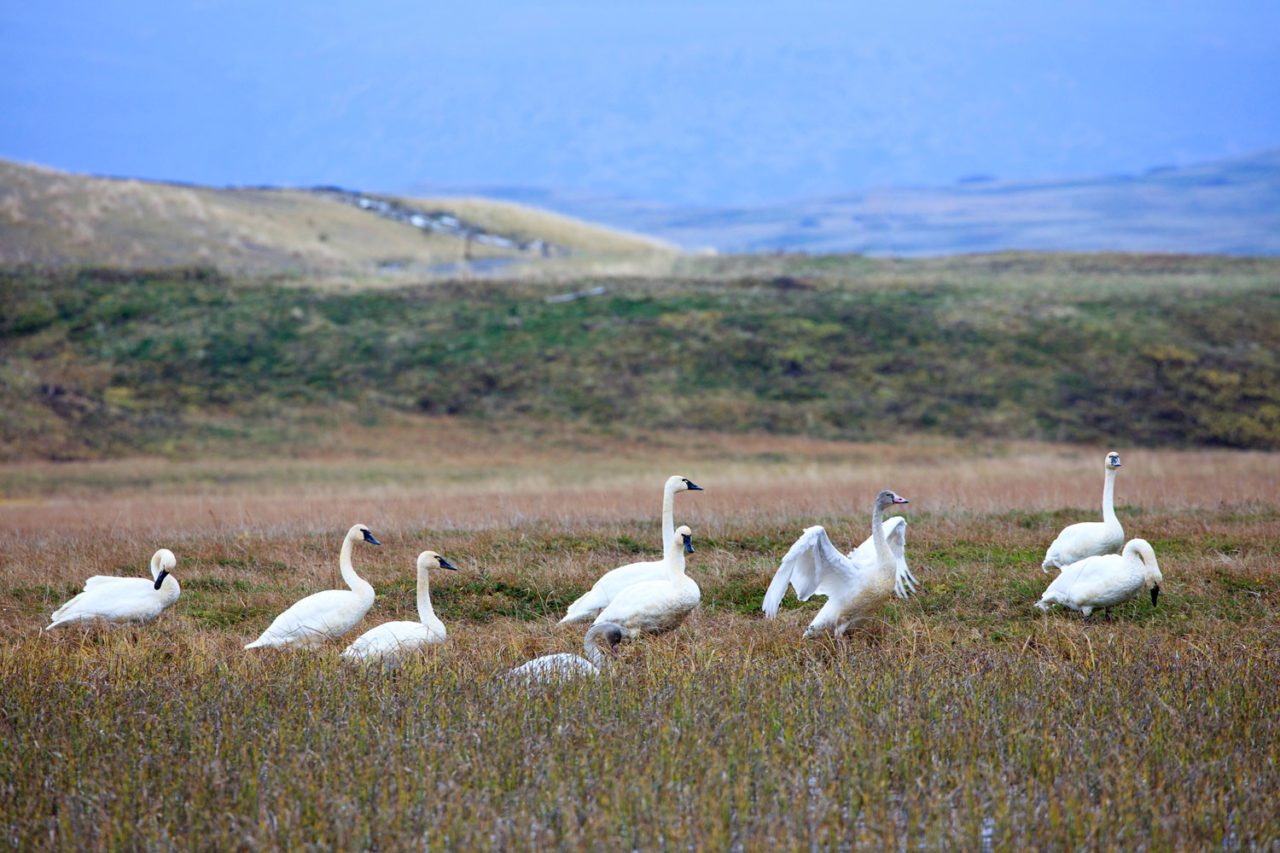Photo Essay: Izembek Refuge Is A Wildlife Spectacle, Even By Alaskan Standards
Photo essay by Gerrit Vyn
June 22, 2020From the Summer 2020 issue of Living Bird magazine. Subscribe now.
At the far end of the Alaska Peninsula, where land gives way to the Bering Sea, sits a little-known backwater that few Americans know exists, and even fewer visit: Izembek National Wildlife Refuge.
Despite its remote location and its distinction as the state’s smallest national wildlife refuge, Izembek has been recognized for half a century for the ecological value of its unique wetlands and their importance to migratory birds. And its list of recognitions and protections is a long one.


More than two-thirds of Izembek’s 310,000 acres are designated as federally protected wilderness. It was the first place in the United States to be designated under the RAMSAR Convention as a Wetland of International Importance, and it is recognized as an Important Bird Area of global significance by Audubon and BirdLife International.
In 2018 the Cornell Lab of Ornithology’s Conservation Media program mounted an expedition to document the wildlife and wilderness of Izembek, most of it for the first time. They arrived in August, armed with little more than the knowledge that Izembek is a mecca for migratory waterfowl. What they found over six weeks is that Izembek isn’t just about the birds. It protects a place that is grand even on an Alaskan scale—an intact wilderness encompassing vast wetlands, abundant wildlife, and a volcanic landscape as spectacular as anywhere on earth.
Abundant Birds


With the Isanotski volcano looming in the background, the refuge’s marine lagoon draws around 200,000 migratory Black Brant—almost the entire population of the subspecies in the Pacific Flyway—every autumn. Photo by Gerrit Vyn. 

Bald Eagles and other predators are drawn to Izembek to feed on waterfowl and the hundreds of thousands of salmon that spawn in the refuge’s rivers and streams. Photo by Gerrit Vyn. 

Izembek supports more than half of all wintering Emperor Geese in the world, as well as globally significant concentrations of Steller’s Eider and Taverner’s Cackling Goose. Photo by Gerrit Vyn. 

Black Brant stop over in Izembek to fatten up on highly nutritious eelgrass during migration between breeding areas in Alaska, Canada, and Russia and wintering areas along the Pacific Coast as far south as Mexico. Photo by Gerrit Vyn. 

More than 500 Tundra Swans nest within Izembek National Wildlife Refuge. The population is unique in being the only essentially non-migratory breeding population in North America. Photo by Gerrit Vyn.
Majestic Mammals


In recent years, walrus have begun hauling out en masse on the thin ribbon of barrier islands that separates Izembek’s lagoon from the Bering Sea. Photo by Gerrit Vyn. 

Drawn to take advantage of spawning salmon in Izembek’s streams, grizzly bears can reach a density of nine per square mile in late summer. Photo by Gerrit Vyn. 

Wolves follow the migration of the Southern Alaska Peninsula caribou herd through Izembek, as the herd moves to calving grounds north of the refuge. Photo by Gerrit Vyn. 

Red foxes are a common sight at Izembek. Photo by Gerrit Vyn. 

Resting between foraging trips to sea, large numbers of walrus find refuge on the protected barrier islands that separate Izembek Lagoon from the Bering Sea. Photo by Gerrit Vyn. 

Grizzly bear populations in and around Izembek Lagoon are among the densest in the world, attracted and fed by robust populations of 4 Pacific salmon species that spawn in the lakes and streams of the refuge. Photo by Gerrit Vyn. 

A gray wolf patrols the edge of Izembek Lagoon for potential meals. Photo by Gerrit Vyn. 

Izembek Lagoon is home to large numbers of sea otters. Photo by Gerrit Vyn.
Untrammeled Wilderness


Waterfowl in front of the Shishaldin Volcano and over the lagoon in Izembek. Photo by Gerrit Vyn. 

The narrow isthmus of land separating Izembek Lagoon and the Bering Sea (foreground) from Cold Bay and the Pacific Ocean (upper left), is the heart of the Izembek wilderness. A proposed road would bisect this fragile wilderness. Photo by Gerrit Vyn. 

Izembek harbors one of the largest eelgrass beds in the world, which is why this marine wetland complex was the first American site designated under the RAMSAR Convention. Photo by Gerrit Vyn. 

Pavlof Volcano provides a constant reminder of the active volcanic activity in the area. Photo by Gerrit Vyn. 

The Aghileen Pinnacles with Pavlof Sister, Pavlof Volcano, and Little Pavlof beyond, add to the outstanding wilderness qualities of the Izembek refuge. Photo by Gerrit Vyn.
The Shishaldin Volcano and nearby lagoon are surrounded by Izembek’s federally protected lands. Such protection by The Wilderness Act preserves “an area where the earth and its community of life are untrammeled by man,” and does so “in such manner as will leave them unimpaired … as wilderness.”
Gerrit Vyn is a documentary producer, videographer, and photographer with the Cornell Lab of Ornithology‘s Center for Conservation Media.


All About Birds is a free resource
Available for everyone,
funded by donors like you




